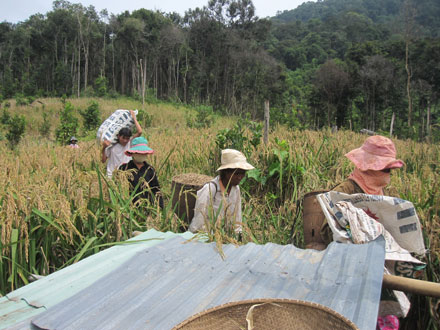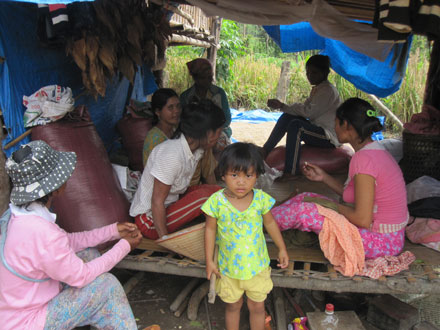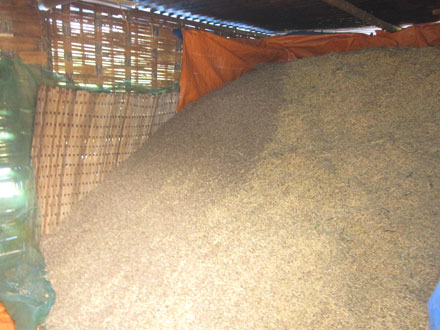Tip Village in Gia Lai Province has a tradition of knocking down forest to grow crops and rice.
 |
| Many government sponsored forests were destroyed to grow rice |
 |
| “These forests belong to us.” |
 |
| Each family spent one month harvesting rice |
 |
| Filling their houses with rice is a pride of Tip villagers |
Traditionally, people in this village would knock down forest and grow for periods of 3 years. The soil was never fertilised with any chemicals.
Rice could grow thanks to nutrition left by forest trees, which were cut down or burned.
After only 3 years, the soil was exhausted and rice could no longer grow. At this point, they would find another area, knock down forest, and repeat the process.
It takes the soil 10 years to recover once it has been exhausted meaning at least 10 years before they could return.
According to traditional laws set forth by the locals, the forests which were burnt by their ancestors belong to them forever.
Although these forests were abandoned for decades and have become regenerating forests controlled by the government, local belief still says that these forests belong.
When their dozens of hectares of fields became exhausted in 2008, people from Tip Village all relocated to forests in Sa Thay District, Kon Tum Province.
These forests were planted by the government for protecting water sources, land, environment and to help prevent natural disasters. Since then, hundreds of hectares of this protective forest have been destroyed.
Although Se San 3A hydropower plant has been built here, Tip villagers still do not know about modernisation.
They live just on growing rice. They are very proud of destroying so much forest, owning many fields and storing a lot of rice at home.
“My village does not have to suffer from hunger anymore. We have many fields in Sa Thay District. My whole village has taken down forest there. For two years, all families have reserved hundreds of rice bags,” a villager said proudly.
Although forest guards have tried to stop them, the villagers still secretly are knocking down forest to grow rice. When forest guards enforce their protection, they mobilise all family members, including children and elderly, to speed up their process of deforestation.
“When there aren’t any forest guards here, we take action. We even will do it at night. There were times that many forest guards here tried to stop us but we do not have enough rice to eat so we appealed our whole village to go together. Finally, the forest guards left us alone. If we do not grow crops and rice, what we will eat?” asked Luc, a villager.
When asked about violating laws by destroying forests, they reply, “We are told not to knock down forest. However, we only do that when we do not have enough food to eat. Our village has many people so we think there is not enough guards to stop us. If we were put in jail, the government would have to feed us.”
Even elderly people and the hamlet’s chief also join in the process.
Nguyen Hong Tanh, Chairman of Ia Kreng Commune said, “Their paddy fields were protectd forests of Kon Tum Province. When they destroyed forests, leaders of Sa Thay and Chu Pah districts prevented them and emphasised government regulations however, they do not have enough food to eat so they had to work. The People’s Committee of Chu Pah decided to allow them to complete their harvesting and then return the fields to Kon Tum Province in November. They will be provided with 115 hectares of land in Chu Pah District and fertiliser so that they can grow rice for longer periods.”
| The village is located at Ia Kreng Commune, Chu Pah District, Gia Lai Province. It has a total of over 60 families with 360 people who are Bahnar and Jrai ethnic groups. They live on growing crops and rice. In the past, they lived and planted crops and rice along both sides of Po Ko River which belonged to Gia Lai – Kon Tum Province. In 1991, Gia Lai – Kon Tum Province was divided into two provinces consisting of Gia Lai and Kon Tum. They started living on only one side of the river, which belongs to Gia Lai Province. The other side belongs to Mo Rai Commune, Sa Thay District, Kon Tum Province. |

Leave your comment on this story